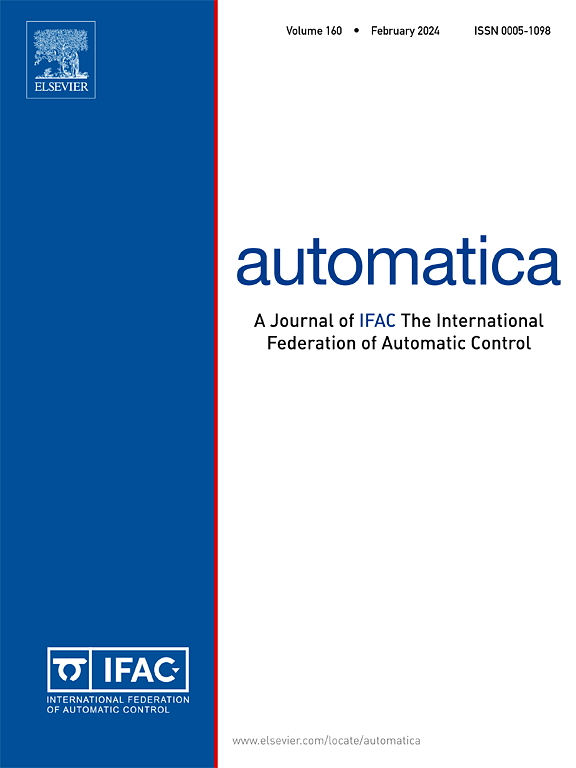Event-Triggered and Periodic Event-Triggered Extremum Seeking Control
IF 4.8
2区 计算机科学
Q1 AUTOMATION & CONTROL SYSTEMS
引用次数: 0
Abstract
This paper introduces two innovative control schemes, event-triggered extremum seeking control (ET-ESC) and periodic event-triggered extremum seeking control (PET-ESC), designed for real-time optimizing multivariable systems. The classical extremum seeking control is augmented with static and dynamic triggering conditions to enable aperiodic and less frequent updates of the system’s input signals, offering the so-called resource-aware control design. Our convergence analysis is built upon time-scaling combined with Lyapunov and averaging theories for discontinuous systems. Both ET-ESC and PET-ESC assign an exponentially stable behavior to the resulting average system, which is equivalent to a practical asymptotic convergence to a small neighborhood of the extremum point. We guarantee Zeno behavior avoidance by establishing a minimum dwell time to avoid infinitely fast switching. In particular, the PET-ESC utilizes impulsive systems within a hybrid systems framework. Performance optimization matches one of the classical continuous-time extremum algorithms while balancing system performance with actuation resource consumption. Our ET-ESC and PET-ESC algorithms are the first of their kind and allow for arbitrarily large inter-sampling times unlocking the restriction imposed by existing sampled-data ESC. Extensive simulations validate the feasibility and effectiveness of our designs, illustrating the advantages of ET-ESC and PET-ESC.
求助全文
约1分钟内获得全文
求助全文
来源期刊

Automatica
工程技术-工程:电子与电气
CiteScore
10.70
自引率
7.80%
发文量
617
审稿时长
5 months
期刊介绍:
Automatica is a leading archival publication in the field of systems and control. The field encompasses today a broad set of areas and topics, and is thriving not only within itself but also in terms of its impact on other fields, such as communications, computers, biology, energy and economics. Since its inception in 1963, Automatica has kept abreast with the evolution of the field over the years, and has emerged as a leading publication driving the trends in the field.
After being founded in 1963, Automatica became a journal of the International Federation of Automatic Control (IFAC) in 1969. It features a characteristic blend of theoretical and applied papers of archival, lasting value, reporting cutting edge research results by authors across the globe. It features articles in distinct categories, including regular, brief and survey papers, technical communiqués, correspondence items, as well as reviews on published books of interest to the readership. It occasionally publishes special issues on emerging new topics or established mature topics of interest to a broad audience.
Automatica solicits original high-quality contributions in all the categories listed above, and in all areas of systems and control interpreted in a broad sense and evolving constantly. They may be submitted directly to a subject editor or to the Editor-in-Chief if not sure about the subject area. Editorial procedures in place assure careful, fair, and prompt handling of all submitted articles. Accepted papers appear in the journal in the shortest time feasible given production time constraints.
 求助内容:
求助内容: 应助结果提醒方式:
应助结果提醒方式:


